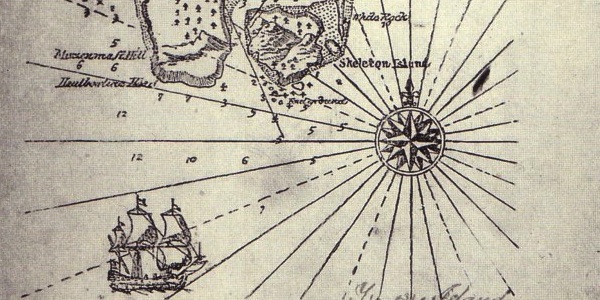
October 10, 2013, by Charlie Laughton
Treasure Maps
Maps are great, and we use them a lot in our research. I’m not talking about maps of places, but maps of shapes. Let me explain.
Imagine you are interested in the shapes of triangles. Assuming that you don’t care about their size, just their shape, then you can define the shape of any triangle by two things: the angle between two of its sides, and the ratio of the lengths of those two sides. Call the first thing “latitude” and the second “longitude” and you can see how you could plot the shape of any triangle as a point on a map. If you had lots and lots of triangles you could plot them all, and you would begin to see which parts of the map (or “shape space”) were heavily populated (lots of points) and which regions were not. You might then wonder why certain regions were rather bare, and what sort of triangles might live out there.
Well we do the same things with the protein molecules we study as potential targets for new drugs. As I explained last time proteins are soft and dynamic, and this can be analysed by computer simulations. Look at a protein molecule one moment and it will have one shape, and so go on one point on the map, but later it will be a different shape, and so go on a different point on the map. Keep this up over a period of time, plot the points and connect the dots, and you can see the journey the protein is making through shape space – nice!
Now somewhere out on this map is a very special place – the place where the protein has the right shape to interact with a drug we want to make or improve. But to begin with we don’t know where this place is; so computer simulation is all about sending out lots of little protein explorers to travel through this world of shapes and build up a bigger and better map of it. I talked before about how these sorts of simulations need very powerful computers; in the early days of this sort of science our exploration was a bit like that of the medieval travellers – we couldn’t travel very far or very fast so our maps never strayed very far from home and could be a bit unreliable at the edges. However now computers are much faster and software is better and we can do a much better job and explore the far reaches of a protein’s shape space.
This is all very exciting and impressive (well, it is if you work in this field!) but some recent work from one of my PhD students, Twana Saleh, has caused me to step back and think about this some more. Basically what Twana has discovered is that, at least for the drug discovery project he has been working on, the computer simulations have been doing a poor job of finding that special point on the map that corresponds to the protein shape that interacts with drugs. Why? – because the simulations were concentrating on exploring exotic foreign locations – the shape equivalents of India, Africa and the Americas – instead of looking in the back garden. Which was where the treasure was buried.
This is not as silly an error as it might appear. Unfortunately the analogy between maps of the world and maps of shapes only works so far. In particular our physical world has just three dimensions to explore, but the world of protein shapes can have thousands of dimensions. This means that, strangely, it can be as hard to properly investigate the back garden as to go off on a foreign adventure. It may not sound so impressive, but if it means we find the prize that others have overlooked, well, we are the winners.
Image: Drawing made perhaps by Robert Louis Stevenson [Public domain], via Wikimedia Commons
No comments yet, fill out a comment to be the first

Leave a Reply